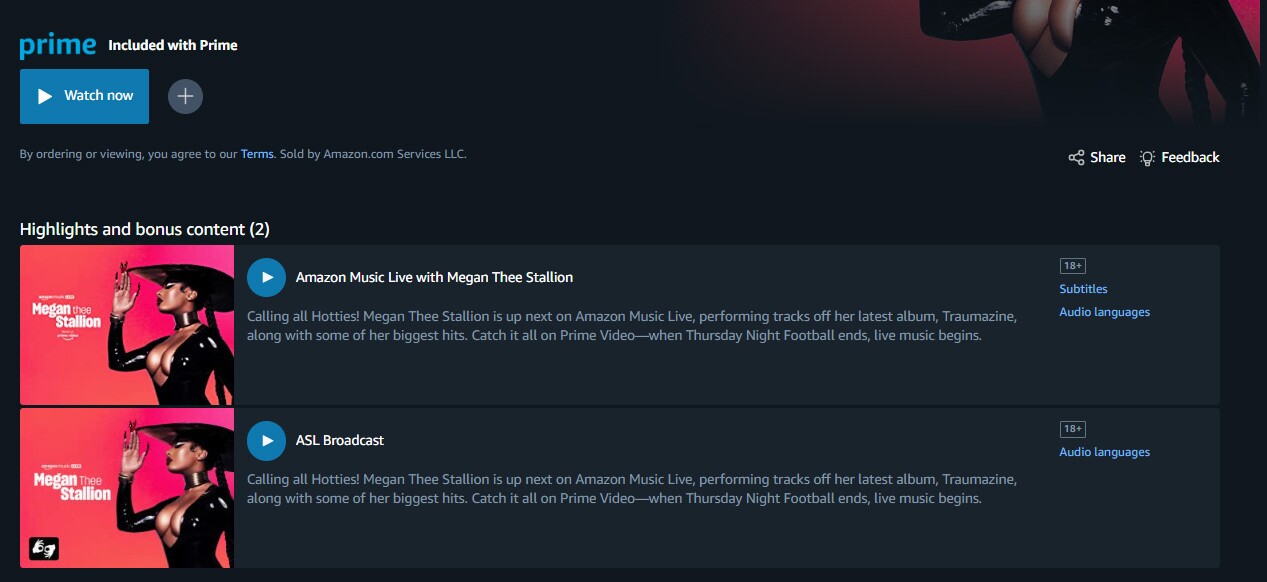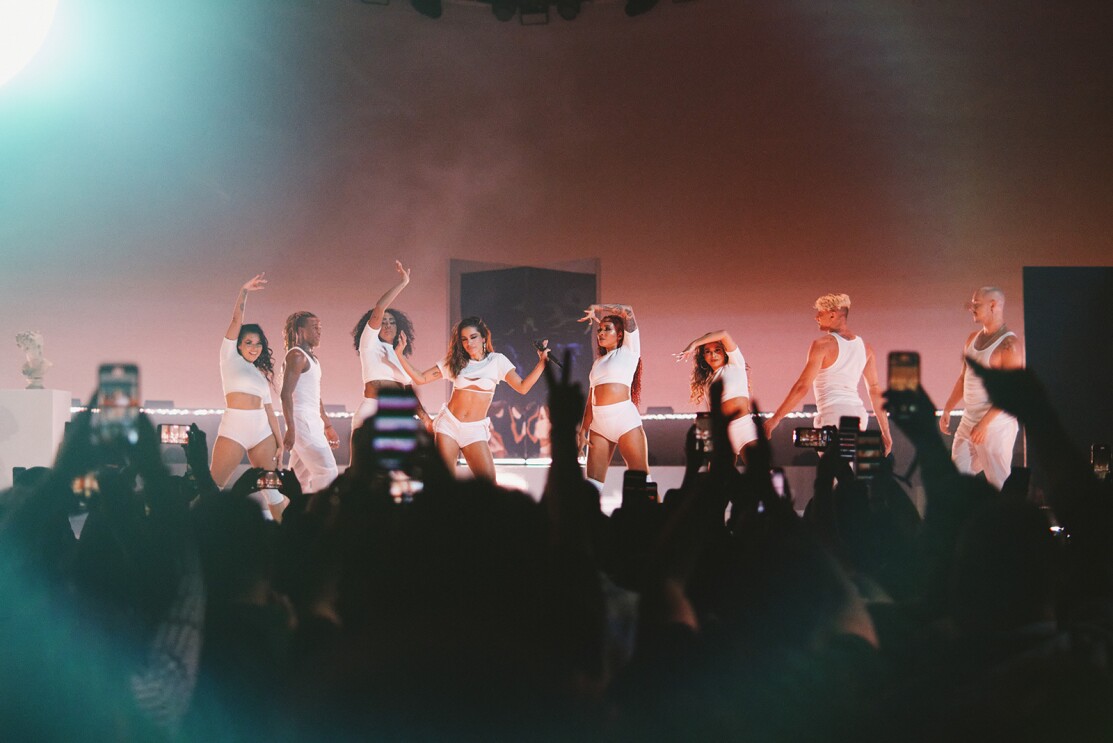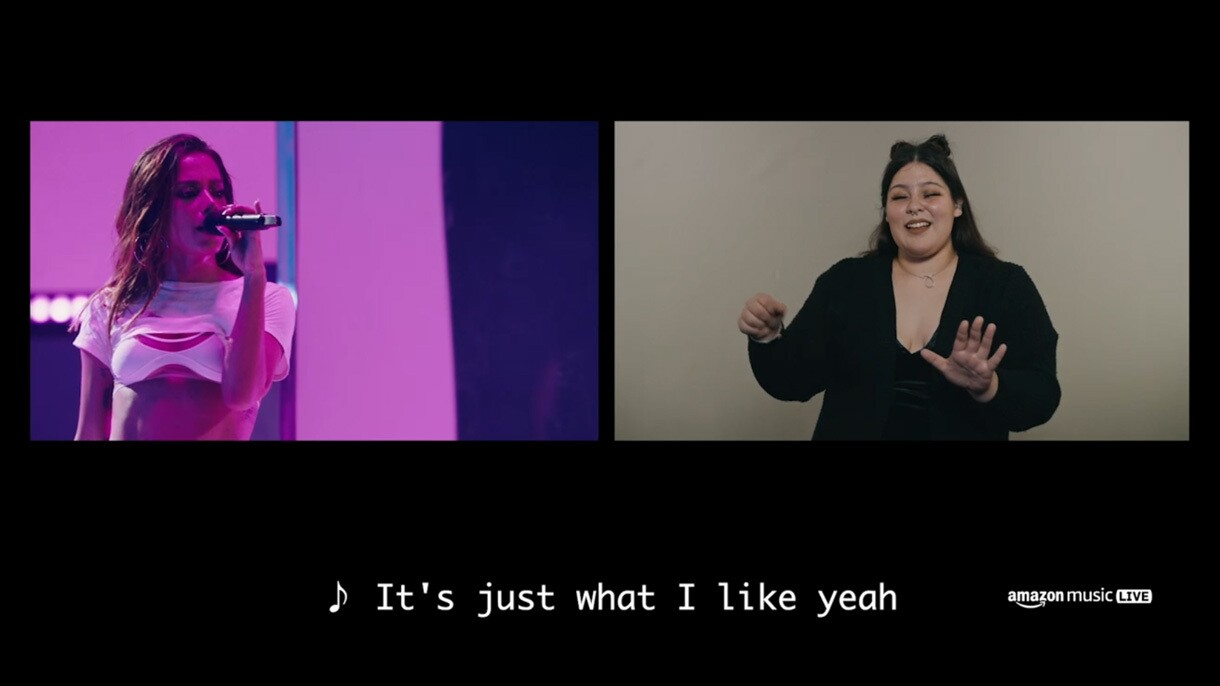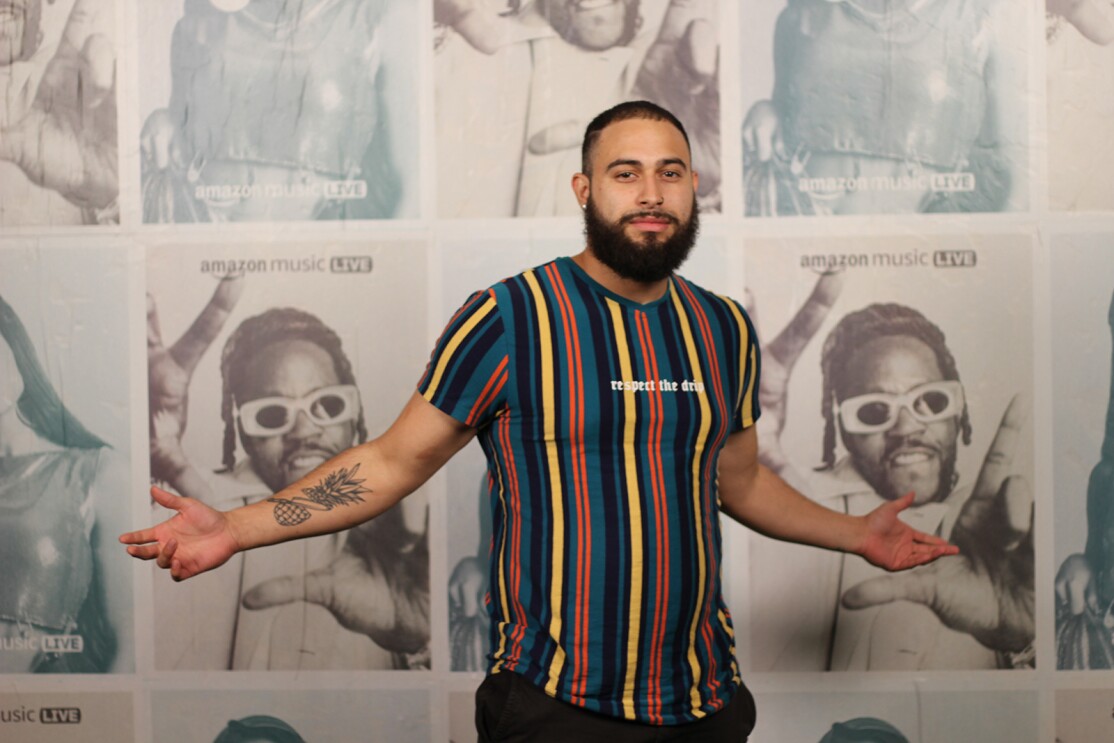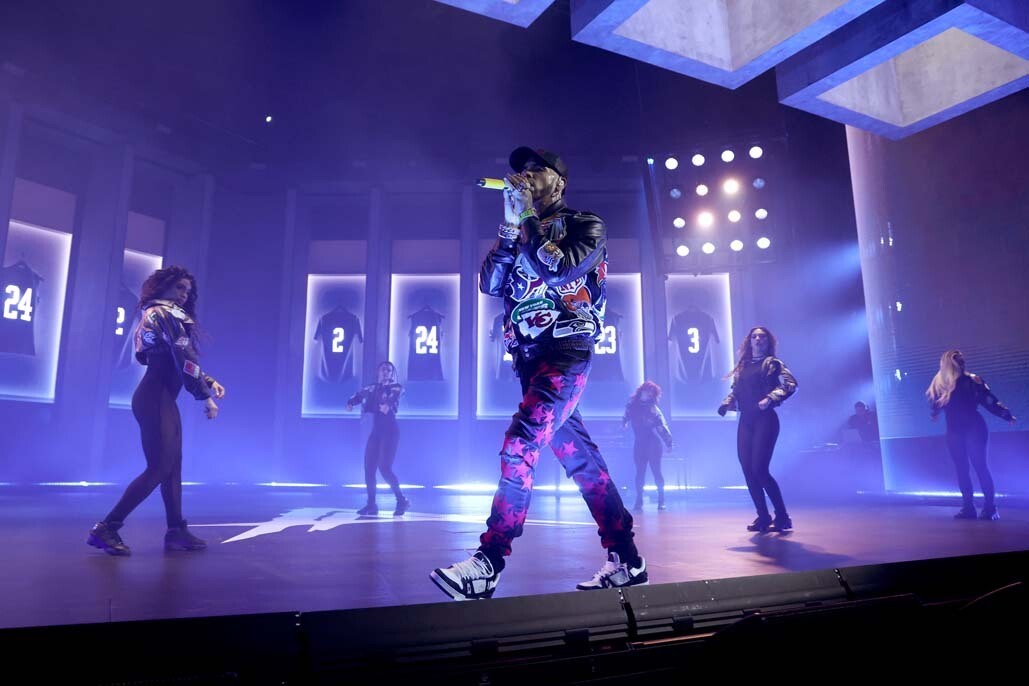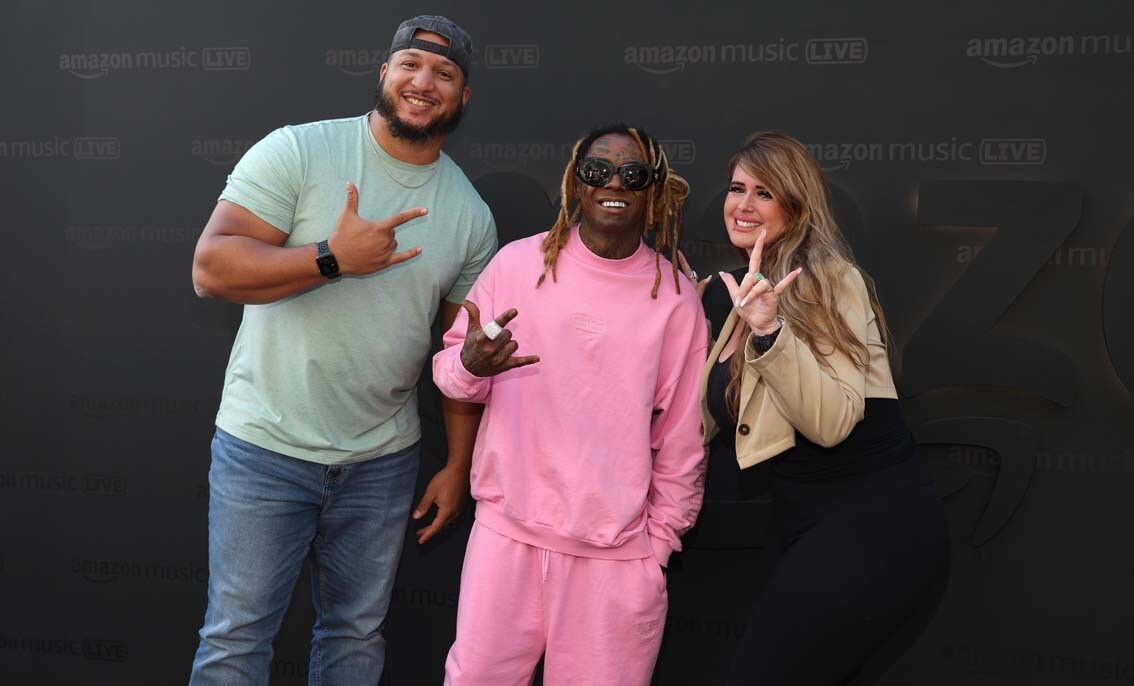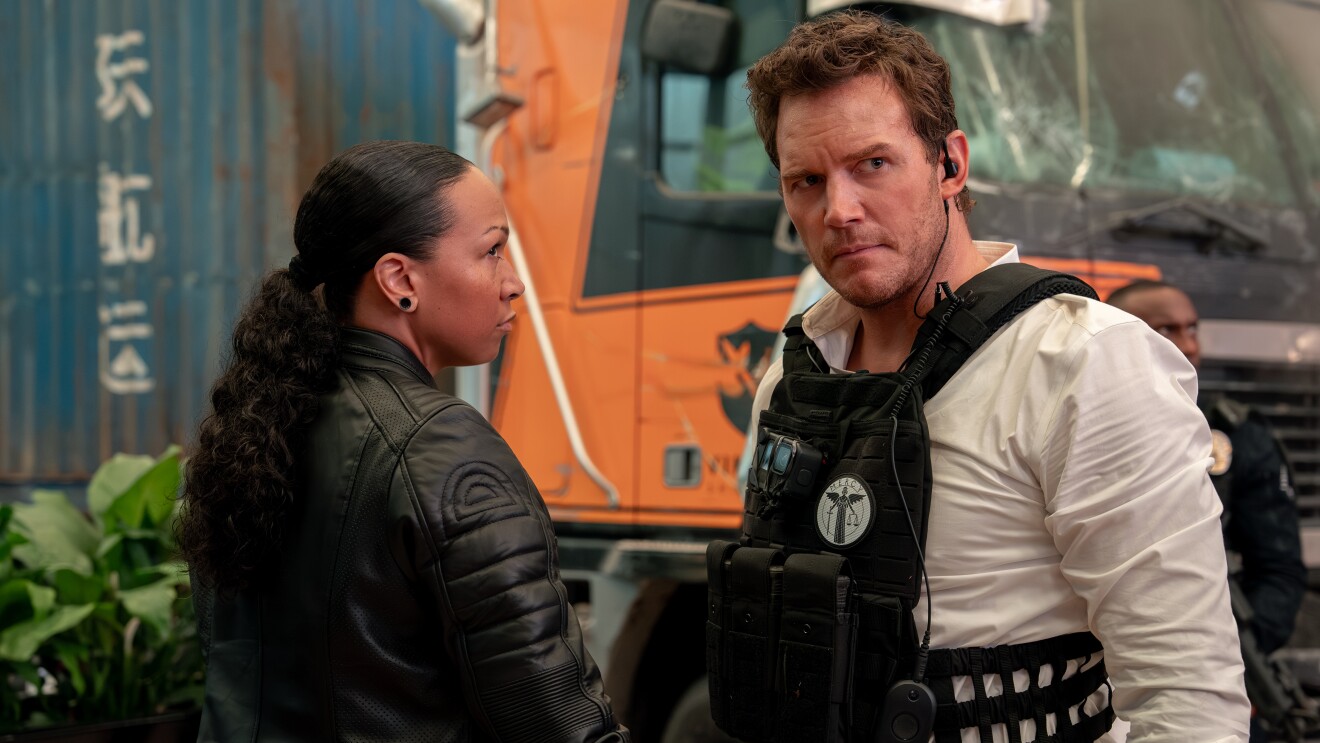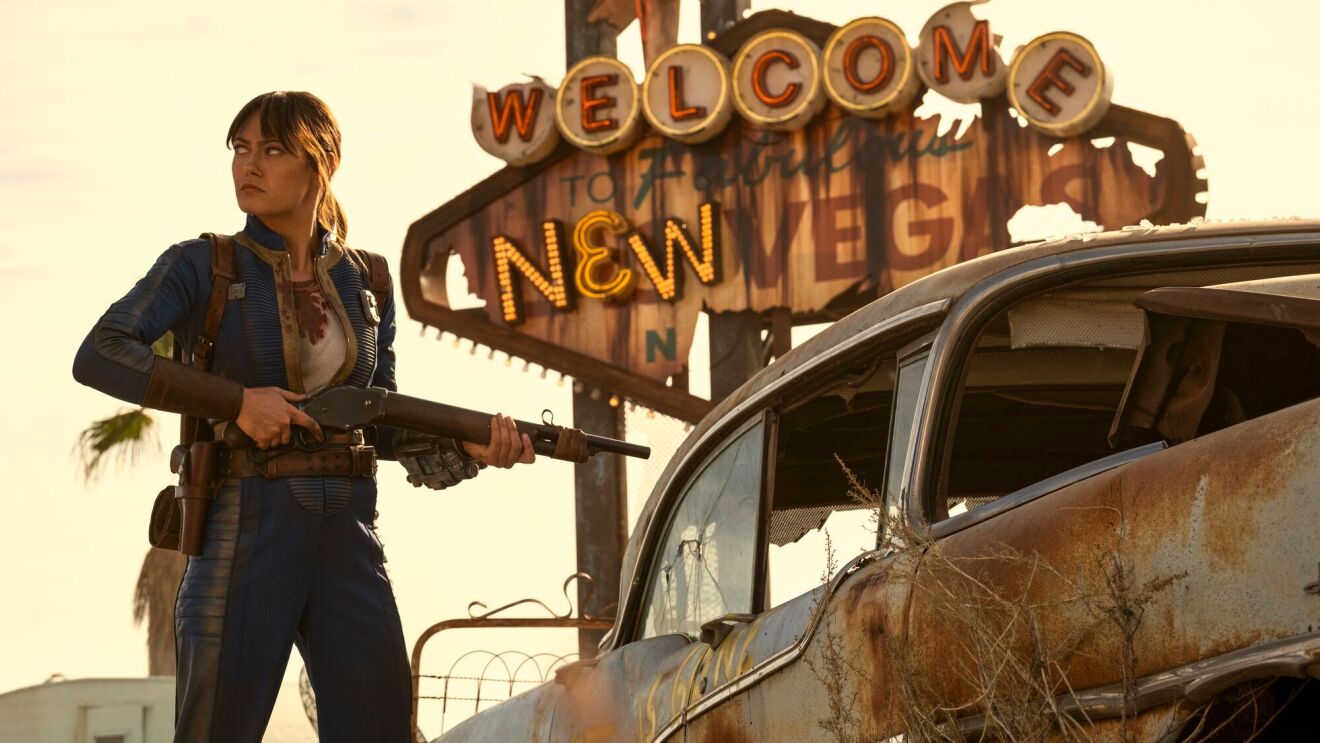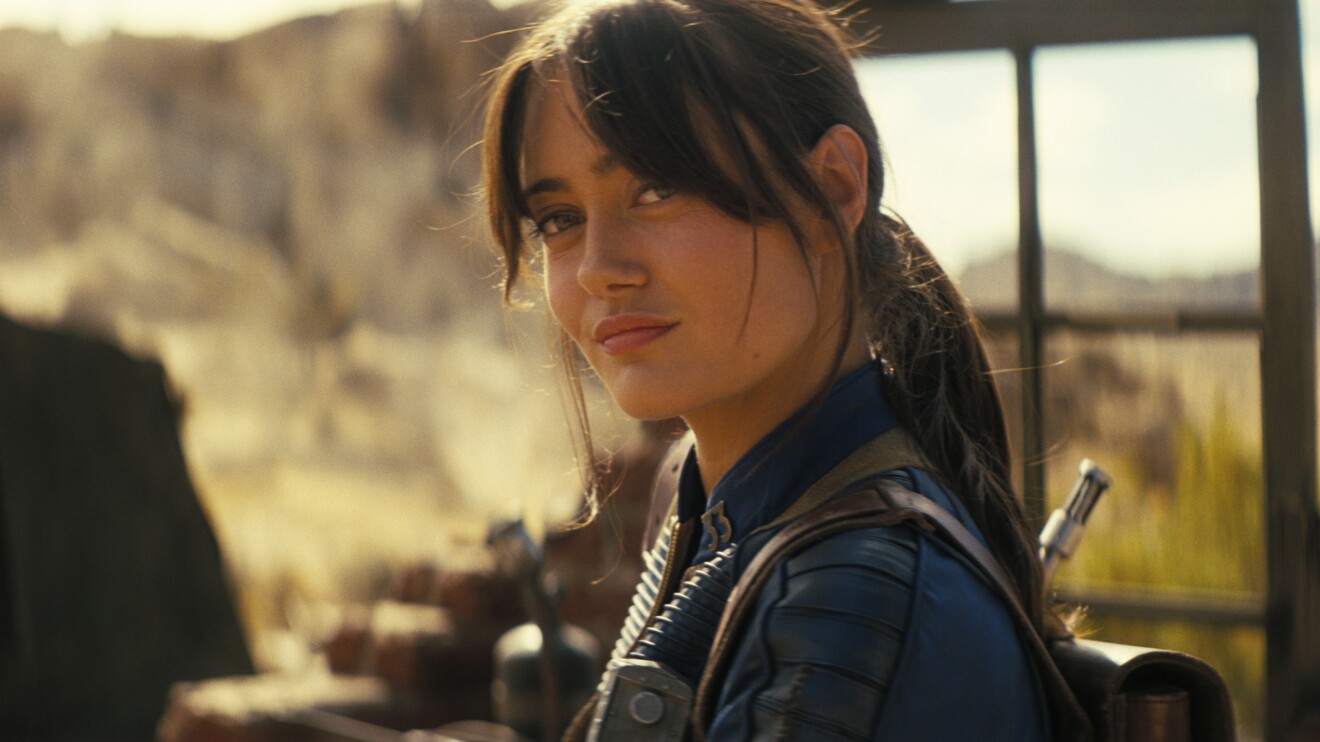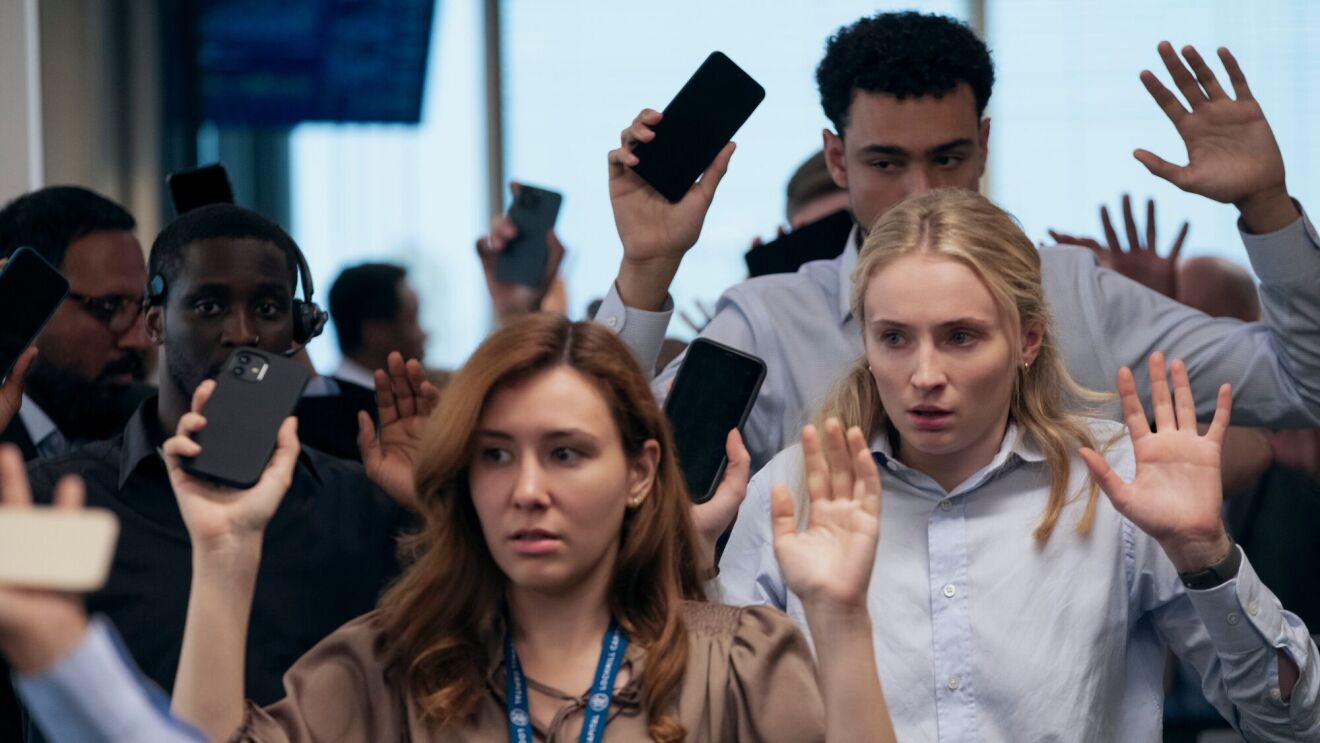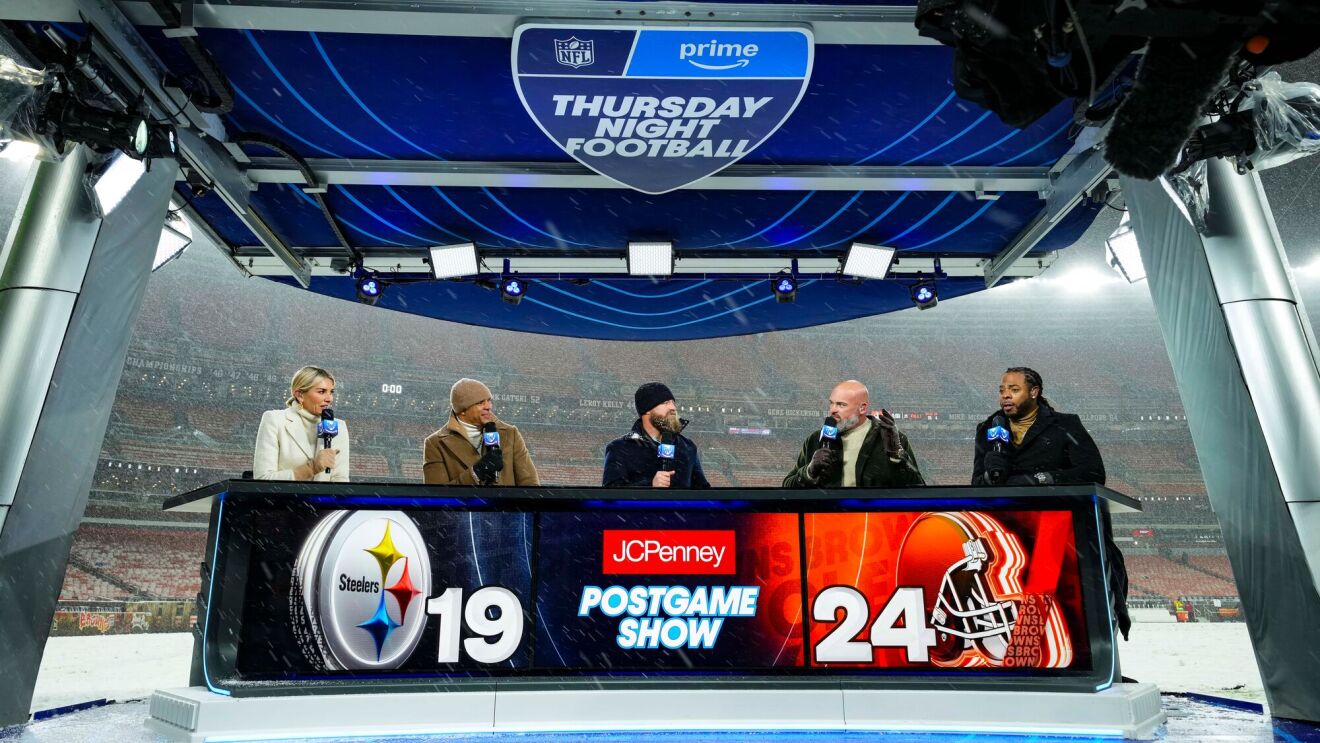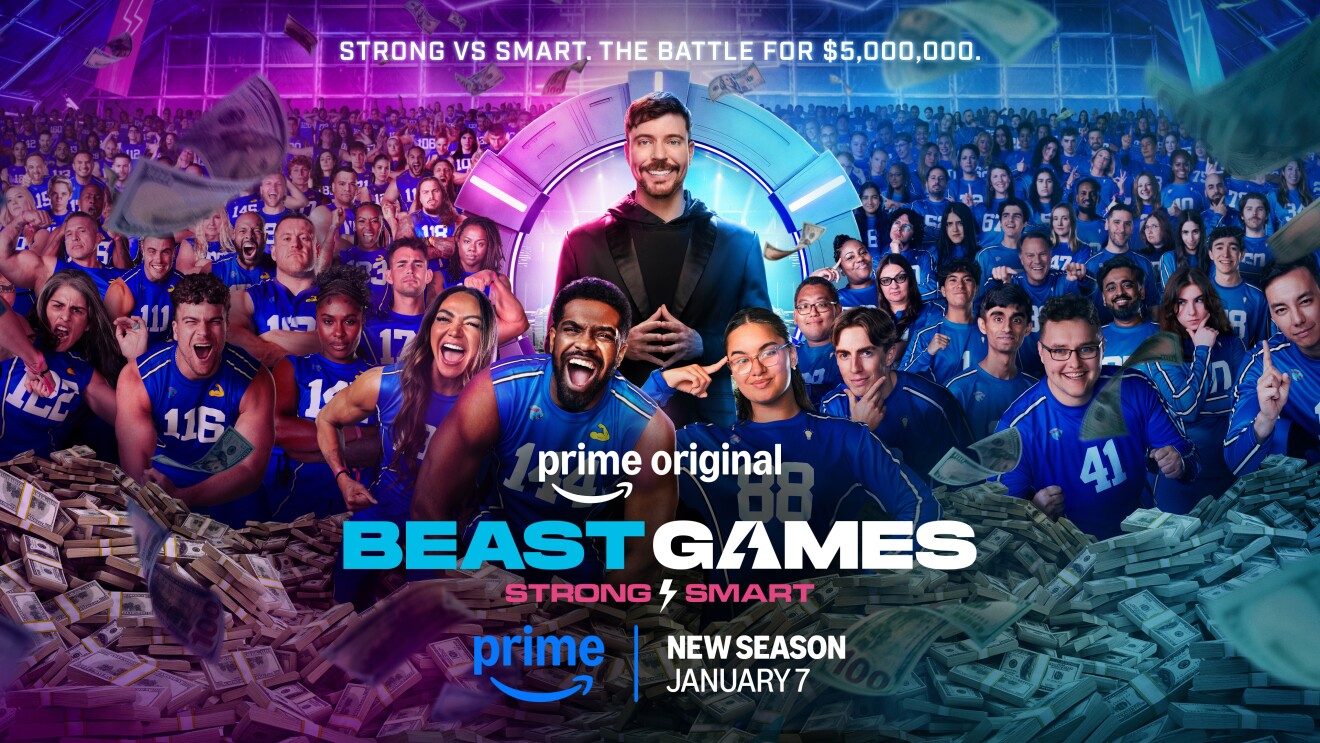A video of Amber Galloway-Gallego went viral in 2013 when fans at the Lollapalooza festival filmed her moving with impeccable rhythm as an American Sign Language (ASL) interpreter for Kendrick Lamar’s performance. That was her first brush with fame, and it certainly wouldn’t be her last.
In her 23 years interpreting live performances, she’s performed alongside Anthony Kiedis, the lead singer of the Red Hot Chili Peppers, and put her skills to the ultimate test rapping side by side with Twista, one of the fastest rappers on the planet. While her speed and musicality are impressive on their own, it’s Galloway-Gallego’s passion for delivering an amazing experience for fans who are deaf and hard of hearing that really shines through, and she’s used that passion to build an agency of incredibly talented interpreters like her.
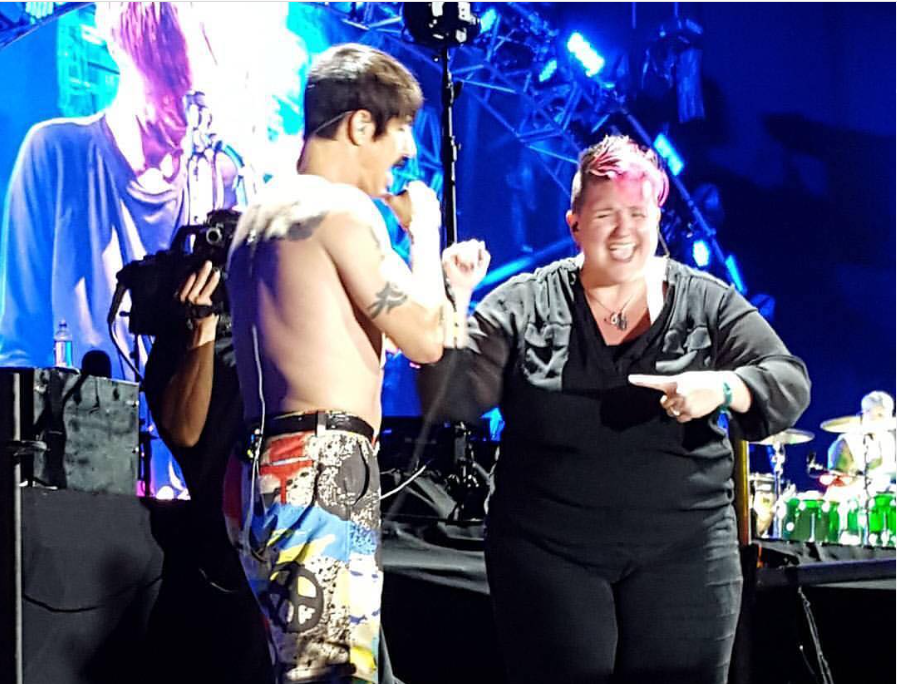 Galloway-Gallego signing alongside Anthony Kiedis during the Red Hot Chili Peppers show at Lollapalooza in 2016.
Galloway-Gallego signing alongside Anthony Kiedis during the Red Hot Chili Peppers show at Lollapalooza in 2016. “Early in my career, I saw a Deaf dance group called The Wild Zappers, and I realized that was what music should look like,” said Galloway-Gallego. “Fans in the Deaf and hard-of-hearing community deserve an experience that matches the artist’s performance, and that means interpreters need to move with musicality and match the vibe of the show—not just interpret the words like they would on a conference call.”
Amazon Music worked with Galloway-Gallego’s agency, Amber G. Productions, to interpret performances during its livestreamed concert series, Amazon Music Live (AML), which reached millions of fans around the world and is still available to watch on Prime Video.
We met with Galloway-Gallego and three of the interpreters from her agency to find out what it’s like to interpret for major artists like Kane Brown, Lil Wayne, and A$AP Rocky. Here’s what we learned.
1. Many of the interpreters who worked on ‘Amazon Music Live’ are deaf or hard of hearing.
01 / 03
Ima Faith Hernandez is an interpreter for Galloway-Gallego’s agency who is also a part of the Deaf community. We caught up with Hernandez at the Amazon Music Live performance for Latin pop sensation, Anitta. She said that many people don’t know how it works for interpreters like her. “A lot of people think we can’t do things because we’re deaf,” she said. “The easiest way to prove them wrong is just to show up and do it.”
Basically, another interpreter—who is often hearing but doesn’t necessarily have to be—listens to the music and provides a feed for the interpreter who is deaf. The interpreter who is deaf takes in what the first interpreter is signing and signs it back to the crowd. For Amazon Music Live, the interpreters had a production room set up to film a livestream to run alongside the show.
 Interpreter Justina Miles signs during the Megan Thee Stallion performance while fellow interpreter Kelly Kurdi supports. Photo by Amber Galloway-Gallego
Interpreter Justina Miles signs during the Megan Thee Stallion performance while fellow interpreter Kelly Kurdi supports. Photo by Amber Galloway-GallegoGalloway-Gallego added that her agency has put a focus on hiring interpreters who are deaf and hard of hearing, noting that interpreters who are a part of the community tend to have a strong grasp of the language and a deep understanding of the culture, which facilitates their connection with the audience.
2. It can take up to two weeks to prepare for a show.
 Martise Colston (left) shared that his favorite show of his career was country superstar Kane Brown’s (right) performance during Amazon Music Live.
Martise Colston (left) shared that his favorite show of his career was country superstar Kane Brown’s (right) performance during Amazon Music Live.Galloway-Gallego’s AML interpreters take time to get familiar with the music beforehand, memorizing the lyrics and putting in the work to match the artist’s energy. Martise Colston, who handled multiple Amazon Music Live episodes, shared that the preparation process varies from one interpreter to the next, and his process usually starts about two weeks in advance.
“Sometimes we have multiple shows in one day, and it takes some work to practice the lyrics and get the vibe for each artist,” he shared. “It’s a time-consuming process; you really have to focus on managing your time efficiently, which can be a challenge at first.”
3. The vibes can’t be off—Amber G. Productions carefully matches the right interpreter with the right show.
01 / 02
Though it’s not a requirement, it certainly helps if a show interpreter is a fan of the artist or music genre. Each of the interpreters we spoke with had different musical interests that helped them connect with the performances on their schedule. “My favorite show ever was definitely the Amazon Music Live performance for Anuel AA,” said Julian Ortiz. “He brought out the Puerto Rican in me, and I loved that.” Ortiz said another dream artist to work for would be hip-hop superstar, Bad Bunny. “I feel like I could match him really well and put on a good show for his fans who are deaf and hard of hearing,” he said.
4. The interpreters stay true to the lyrics—no matter how colorful they may be.
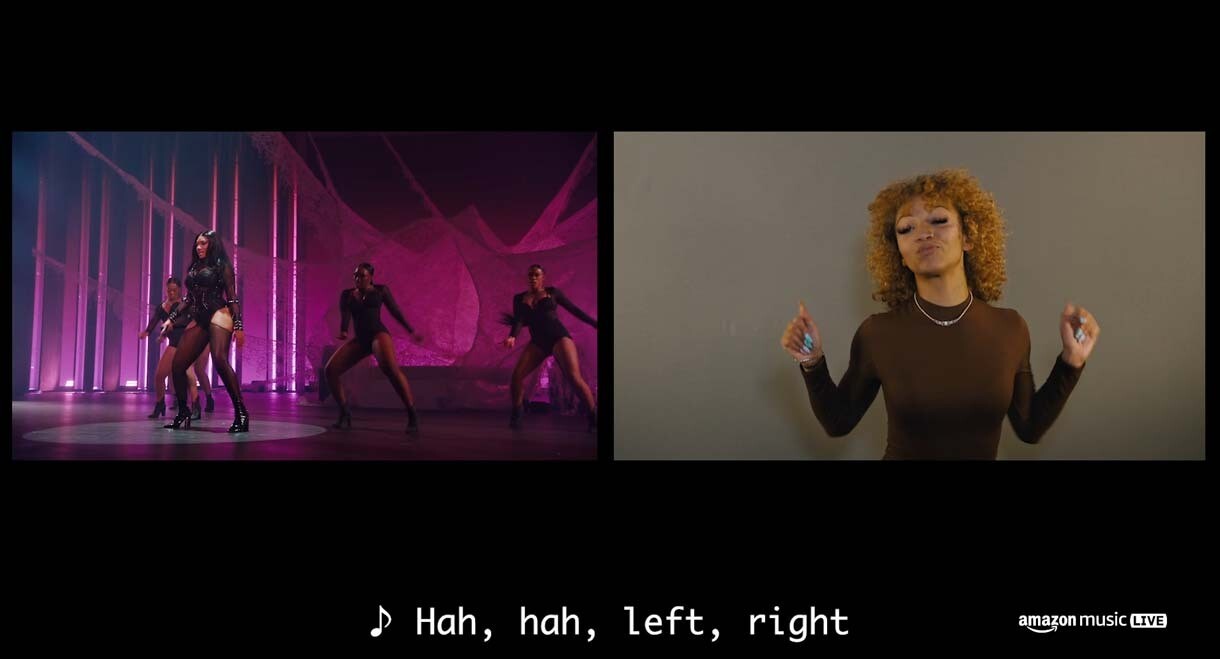 Justina Miles livestreaming during Megan Thee Stallion’s Amazon Music Live show.
Justina Miles livestreaming during Megan Thee Stallion’s Amazon Music Live show.Though some words might be a bit uncomfortable to repeat, signing every lyric is an important part of providing an authentic experience for fans. In an article for Oprah magazine, Galloway-Gallego said, “My job is to accurately convey what an artist is saying—and I never censor. For a song called 'My Wena' about a man's package, I had to sign very literally. The crowd was hysterical—I guess my imagery was spot-on!"
5. Artists like Lil Wayne and A$AP Rocky were excited to learn from the interpreters.
01 / 03
Though not every artist has time to meet the crew on a busy show day, Colston said Lil Wayne and A$AP Rocky were excited to learn from the interpreters ahead of their respective Amazon Music Live shows. “It was so cool to hang out with A$AP Rocky and ask him questions,” he said. “Lil Wayne also came up to us before his show and started asking us what different signs meant. We taught him the sign for ‘I love you.’”
6. The Deaf and hard-of-hearing community often has to fight for access to quality interpreters.
When asked what they wish more people knew about their work, almost every interpreter said they wish access for fans who are deaf and hard of hearing was a standard across the live music industry, not an afterthought.
“Many deaf people have to ask themselves if it’s worth it to fight for access before they buy concert tickets,” Galloway-Gallego said. “The community often has to reach out to ask for specific interpreters—or any interpreter at all—and that process can take weeks or months.”
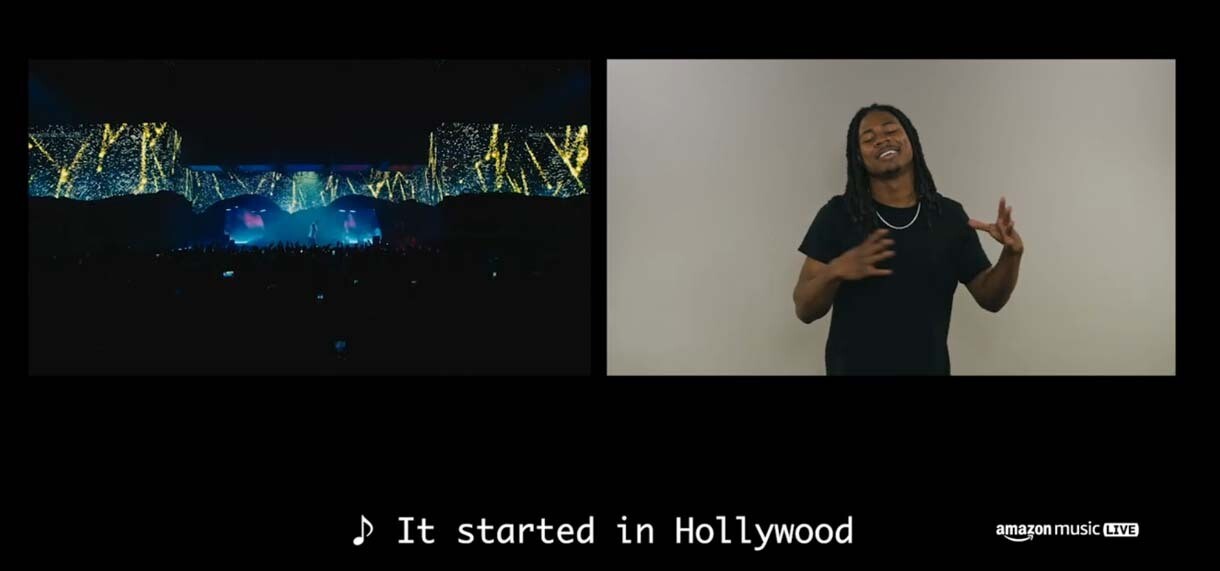 Otis Jones IV livestreaming for A$AP Rocky’s Amazon Music Live show.
Otis Jones IV livestreaming for A$AP Rocky’s Amazon Music Live show.There is still a lot of work to do to make access a priority across the live music industry, but Galloway-Gallego shared there are some promising signs of improvement.
“Sara Ellzey from Amazon Prime Video reached out proactively and was eager to brainstorm ideas to deliver a great experience for deaf and hard of hearing fans watching the Amazon Music Live concert series,” she said. “Tove Lo is also an incredible example of an artist who’s focused on access for deaf and hard of hearing fans. She has made all of her records 100% accessible.”
7. No matter how cool the job is, the focus is always on the fans.
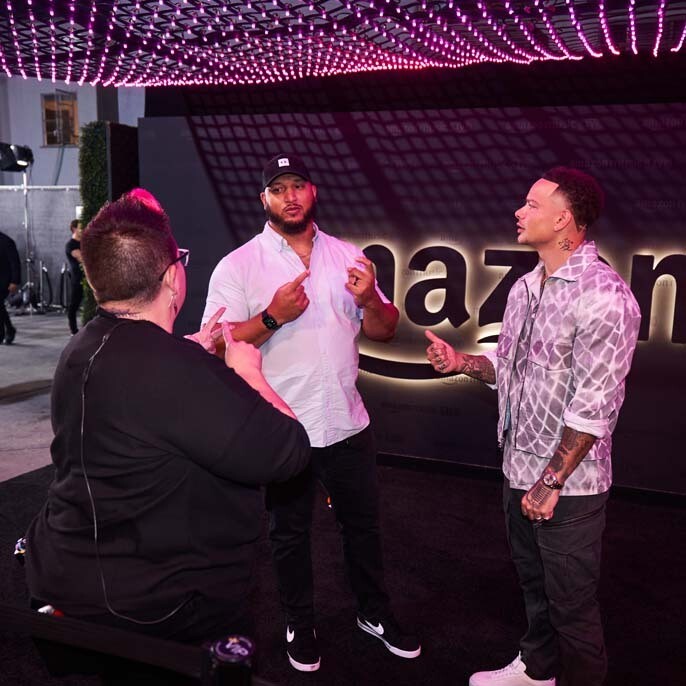
Working in the live music industry is a total dream job for music lovers, but Colston shared that the most important part of his work goes beyond the thrill of working on major shows. “It's not about performing in front of millions of people or meeting cool artists, it's about providing access to fans who are deaf and hard of hearing,” he said. “I’m totally focused on communicating clearly and bringing the same energy as the artist during the show. I definitely breathe a sigh of relief when the show is over and it went well!”
ASL versions of each show are available on Prime Video. Head to the detail page for the show you’d like to watch then click on the option titled “ASL broadcast” to access the interpreter version.
